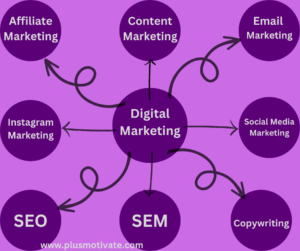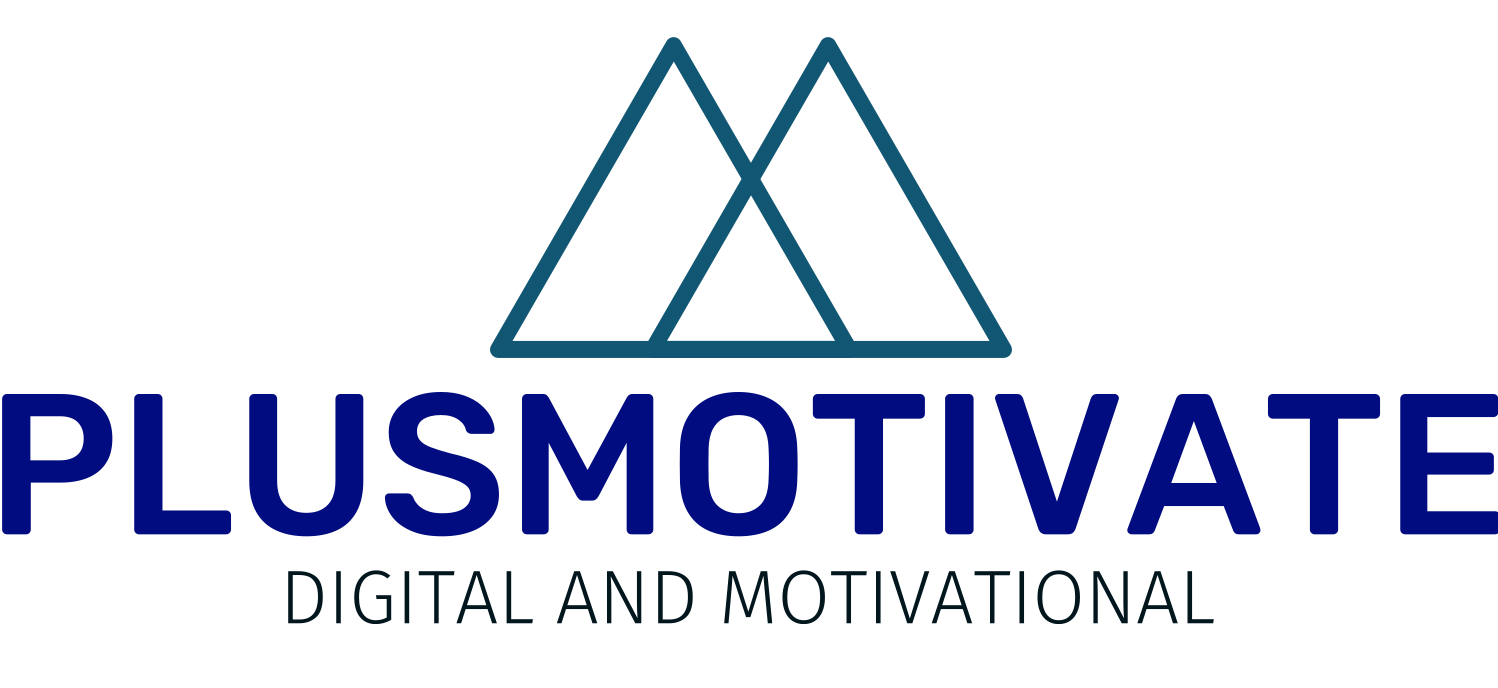Digital Marketing
What is Digital Marketing?
The advertising of goods or services using online tools including search engines, social media, email, and websites is known as digital marketing. Digital marketing has grown in popularity and become more essential for organizations to compete in the modern digital world as a result of the development of technology and the internet. The various facets of digital marketing, including its advantages, tactics, and best practices, will be covered in this article. Presenting the right offer to the right people at the right time in the right location is the most crucial digital marketing rule.
BENEFITS OF DIGITAL MARKETING
Businesses can gain from digital marketing in a number of ways, including:
Reach expansion: Compared to conventional marketing strategies, digital marketing allows businesses to reach a larger audience. Businesses can target specific demographics and geographic locations using social media, email marketing, and search engine optimization (SEO), reaching more prospective customers than ever.
Better engagement: Two-way communication between businesses and customers is made possible by digital marketing, which raises engagement and fosters partnerships. Customers have the opportunity to ask questions, offer feedback, and share their experiences with a business through social media platforms and email marketing.
Cost-effectiveness: Compared to conventional marketing strategies like print or television commercials, digital marketing may be more economical. Numerous digital marketing techniques, like social media marketing and email marketing, are free or inexpensive, making them available to companies of all sizes.
Measurable: Digital marketing offers companies real-time statistics on the effectiveness of their campaigns, enabling them to change and improve in real-time. Metrics like website traffic, click-through rates, and conversion can be tracked by businesses.
Analytics in real-time: Digital marketing enables companies to monitor the success of their efforts in real-time. This implies that companies may improve their campaigns and modify their techniques as necessary to get better outcomes.
Engagement that is more personal: Digital marketing enables companies to interact with customers in a more personal way. This can improve customer retention and foster brand loyalty.
Better Return On Investment: Compared to traditional marketing strategies, digital marketing efforts may provide a higher return on investment (ROI). This is because companies can monitor the success of their efforts and alter them as necessary to maximize outcomes.
NAVIGATING THE DYNAMIC LANDSCAPE OF ONLINE PROMOTION
The field of marketing has experienced a substantial transition in an increasingly digital environment where the internet and technology play crucial roles in molding numerous parts of our life. Digital marketing strategies that make use of the power of the internet, social media, search engines, and other online platforms are quickly supplanting and frequently replacing traditional marketing techniques. Digital marketing is a dynamic and ever-evolving sector that was created as a result of this transformation. We will delve into the complexities of digital marketing in this thorough aticle, looking at its essential elements, tactics, advantages, difficulties, and potential in the future.
UNDERSTANDING DIGITAL MARKETING: A MULTIFACETED APPROACH
At its foundation, digital marketing includes a wide range of actions intended to advertise goods, services, or brands online. Websites, social media platforms, search engines, email, mobile apps, and various forms of multimedia material are just a few examples of these channels. Digital marketing embraces interaction, which allows two-way contact between brands and their target consumers, in contrast to traditional marketing, which is frequently unidirectional.
You can also learn from Neil Patel, a world class Digital Marketing Expert
KEY COMPONENTS OF DIGITAL MARKETING

1. SEARCH ENGINE OPTIMIZATION (SEO)
SEO comprises enhancing a website’s content, structure, and technical characteristics in order to rank higher in search engine results pages (SERPs). The purpose of this organic type of digital marketing is to boost visibility and drive targeted traffic to websites.
Search engine optimization (SEO) is an important component of digital marketing because it tries to increase a website’s exposure and organic (non-paid) search engine rankings. In an age where having an online presence is critical, SEO is critical for increasing web traffic and making it simpler for consumers to locate businesses, organizations, and other entities on search engines like as Google, Bing, Yahoo, and others.
SEO is the process of improving a website’s content, structure, and technological aspects in order to rank higher in search engine results pages (SERPs). The goal of SEO in digital marketing is to increase visibility and deliver targeted visitors to websites.
SEO (search engine optimization) is an important component of digital marketing since it attempts to boost a website’s exposure and organic (non-paid) search engine ranks.
2. CONTENT MARKETING
Content marketing is the practice of creating and spreading meaningful content with the purpose of attracting and retaining a specific audience.
The creation and transmission of valuable, relevant, and consistent information is at the heart of content marketing. It tries to attract and retain the target audience while quietly marketing goods or services.
The primary purpose of content marketing is to capture and hold the attention of a target audience by creating and delivering valuable, relevant, and consistent content. It goes beyond mere sales pitches to give information, address concerns, and establish the business as an authoritative source.
In the digital age, content marketing has become an essential component of any efficient marketing plan since it can help organizations build brand awareness, win the trust of their target market, and ultimately improve sales.
We will look at the most important aspects of content marketing, such as its benefits, the many types of content, the importance of a content strategy, and the best techniques for producing and sharing information subsequently.
3. AFFILIATE MARKETING
Affiliate marketing is simply the promotion of other company’s goods, products, or services via your blog, website, or social media channels in exchange for a commission on any purchases generated by your affiliate or referral links.
Affiliate marketing has emerged as a thriving and potentially lucrative sector in the online world, allowing anyone to make money by promoting goods or services from other firms. This strategy involves building alliances with businesses and getting fees as a result of marketing campaigns that result in sales or lead creation. Without having to create your own products, you can develop a consistent stream of income by using your web presence and marketing expertise.
4. EMAIL MARKETING
Email marketing is a dynamic and adaptable digital marketing approach that has stood the test of time. In a day when social media, SEO, and other digital marketing channels are continuously evolving, email marketing remains a solid and efficient means to connect with your target audience and achieve your marketing objectives.
Email marketing is the practice of sending targeted emails to a group of subscribers with the goal of establishing connections, advertising goods or services, and finally increasing conversions.
5. SOCIAL MEDIA MARKETING
Social Media Marketing (SSM) is a digital marketing technique that uses social media platforms to engage with an audience, raise brand awareness, and fulfill marketing goals. It entails developing and sharing content, engaging with followers, and running paid advertising campaigns across platforms such as Facebook, Instagram, Twitter, LinkedIn, Pinterest, and TikTok, to name a few.
-
What is the significance of social media marketing?
SMM is important because it allows businesses to reach their target audience in a direct and cost-effective manner. It allows for real-time interaction, feedback, and brand building. Furthermore, with billions of active social media users, it’s a massive industry that can’t be ignored.
2. Social Media Marketing Goals
- Brand Awareness: Making people aware of the existence of your brand.
- Audience Engagement: Creating a devoted and involved community.
- Lead generation: Is the process of attracting potential clients.
- Website Traffic: Getting people to visit your website.
- Sales and Conversion: Converting leads into paying customers.
- Customer Retention: Keeping current consumers interested and committed.
- Reputation Management: Entails preserving a positive brand image.
3. Laying the Foundations
a. Understand Your Audience
Before getting into SMM, you must first gain a thorough grasp of your target audience. Creating buyer profiles, analyzing demographics and psychographics, and knowing their pain points, preferences, and online behavior are all part of this process.
b. Selecting the Best Social Media Platforms
Not every social media platform is appropriate for every business. Determine where your target audience spends their time and modify your campaign accordingly. B2B companies, for example, generally find success on LinkedIn, whereas visually appealing products thrive on Instagram.
c. Analysis of Competitors
Analyzing your competitors’ social media presence might provide useful information. To discover gaps and possibilities, examine their content strategy, engagement strategies, and audience demographics.
d. Establishing Key Metrics
What you don’t measure, you can’t improve. Define key performance indicators (KPIs) that are relevant to your objectives, such as reach, engagement, conversion rates, and client acquisition cost.
4. Content Strategy
a. Producing High-Quality Content
Quality content is the foundation of effective SMM. Learn how to create compelling, useful, and shareable content for your target audience.
b. Calendar of Contents
A content calendar guarantees that your posting schedule is consistent. Plan your content themes, topics, and publication dates to ensure a consistent flow of pieces.
c. Visual Elements
Visual content, such as photographs and videos, frequently outperforms text-based content on social media. Learn how to make eye-catching visuals that are consistent with your brand.
d. Storytelling Methods
Storytelling humanizes your brand and creates an emotional connection with your audience. Create a narrative for your brand and include storytelling into your content.
e. User-Generated Content (UGC)
Encourage your customers to generate brand-related content. User-generated content not only creates trust but also minimizes your effort while creating material.
6. FACEBOOK MARKETING
Facebook has become a vital tool for businesses trying to broaden their reach, communicate with their target audience, and, ultimately, drive sales in the digital age. Facebook has around 2.95 billion monthly active users as of my knowledge cutoff date in September 2023, providing a large potential audience for organizations of all sizes and industries.
What exactly is Facebook Marketing?
The technique of promoting a brand or business on the Facebook network in order to reach and engage potential customers is known as Facebook marketing. Facebook offers a number of tools to help businesses boost their online presence, gain more followers, and drive sales.
Setting Specific Goals
Before delving into the actual parts of Facebook marketing, you must first define your goals. Do you want to raise brand awareness, create leads, enhance website traffic, or drive sales? Setting specific and quantifiable goals will serve as the foundation for your entire Facebook marketing plan.
How to Begin with Facebook Marketing:
-
Create a Facebook Business Page
A Facebook Business Page is required to get started with Facebook marketing. This is distinct from your personal profile and serves as the focal point for your company’s internet presence. You can start a Business Page by following instructions on Facebook.
-
Optimizing Your Business Page
Your Business Page should be visually beautiful, informative, and brand-reflective. This includes uploading a profile picture, a cover photo, an engaging “About” section, and contact information. Check that your page is comprehensive and correct.
Knowing Facebook’s Algorithm
What information shows in users’ newsfeeds is determined by Facebook’s algorithm. Understanding how it works is critical to the success of your marketing initiatives. In general, the system favors content that fosters meaningful interactions, so make your postings engaging.
-
Facebook Content Strategy
The Art of Compelling Content
Your content should be appealing to your intended audience. When creating content, keep their pain points, hobbies, and preferences in mind. To keep your audience engaged, aim for a balance of instructive, entertaining, and promotional content.
Images and videos are examples of visual content.
Visual material performs well on Facebook. High-quality photographs and videos may catch attention and successfully express your message. Invest in the creation of eye-catching visuals that are consistent with your brand.
Making Interesting Captions
The language you choose to accompany your graphics is equally significant. Create succinct, yet interesting captions to entice viewers to like, comment, and share. To engage with your audience, ask questions, tell tales, and utilize emotive language.
7. INSTAGRAM MARKETING
Instagram is a social networking site that allows users to post photographs and videos with their followers. Instagram presently has over 2.35 billion monthly active users as at September, 2023. In terms of Monthly Active Users (MAUs), Instagram is the fourth most popular social media platform in the world. The platform is expected to have over 2.5 billion users by the end of 2023, making it an effective tool for businesses seeking to reach a wide audience.
Why Instagram Is Important for Marketing
With over a 2 billion monthly active users, Instagram has emerged as one of the most powerful social media networks. Because of its visual nature, it is a perfect platform for businesses to exhibit their products, engage with their audience, and develop a brand identity. The potential influence of Instagram on your marketing efforts cannot be understated.
-
Getting Started with Instagram
Making an Instagram Account First, download the Instagram app and sign up with your email or phone number. Select a distinct username that suits your brand or niche. To maximize your visibility, make sure your profile is set to public.
2. Creating Your Profile
Your profile serves as your online business card. It should include a profile photo, bio, a link to your website, and contact information. Create an engaging bio that conveys your brand’s identity and what your fans may expect.
3. Choosing an Appropriate Username and Profile Image
Your username should be unique and appropriate for your brand. Your profile photo should be a well-known logo or a high-quality image that reflects your company.
4. Creating an Interesting Bio
Use succinct wording in your bio to highlight the value proposition of your brand. To improve discoverability, use relevant keywords, emoticons, and hashtags.
5. Understanding Instagram’s Algorithm
How Instagram’s Algorithm Functions
What content shows in users’ feeds is determined by Instagram’s algorithm. It takes into account criteria such as engagement, recency, and relevancy. Understanding this algorithm is essential for creating material that appeals to a larger audience.
The Importance of Participation
Engagement indicators like likes, comments, and shares are important in deciding post visibility. Encourage participation by using captivating captions and interactive material.
The Value of Timeliness
Instagram prioritizes current content. Consistent posting and staying current with trends will help your content reach more users.
Content Creation Methodologies
Types of Instagram Content
Instagram provides a variety of content forms, such as photographs, videos, and stories. Each format has advantages and disadvantages. Customize your material to your target audience’s preferences.
Designing a Content Calendar
A content schedule keeps you organized and assures a consistent flow of information. When designing your postings, keep themes, holidays, and events in mind.
8. COPYWRITING
Copywriting is the art and science of using words to persuade, inform, and engage an audience. It’s a fundamental element of marketing and advertising, driving sales, building brand awareness, and shaping perceptions.
The Essence of Copywriting
Copywriting is all about communication. It’s the bridge between a brand or product and its target audience. Whether it’s a headline, a product description, a social media post, or a full-blown marketing campaign, copywriting is the means by which a brand’s message is conveyed.
Historical Evolution of Copywriting
The history of copywriting spans several centuries. When the printing press was created in the 15th century, merchants started utilizing written words to advertise their goods. In the 18th and 19th centuries, when newspapers and periodicals proliferated, copywriting gained even more notoriety. The invention of radio, television, and eventually the internet in the 20th century gave copywriters new platforms on which to perform their magic.
What a Copywriter Does
It takes more than writing to be a copywriter. They combine the skills of storytellers, psychologists, and strategists. Their main responsibility is to thoroughly comprehend the audience, the brand, and the product in order to create messages that would appeal to them. They need to produce informational material that also persuades and motivates readers to take action. The copywriter’s words are at the center of these efforts, whether they are aimed at promoting brand loyalty, selling a product, or increasing website traffic.
Understanding Your Audience
Understanding your target audience intimately is essential for producing effective copy. Knowing your audience is necessary before you can write appealing copy. Your content strategy should be guided by the needs, preferences, and behaviors of your audience. Without this knowledge, your copy could be off-target and your point could be lost.
Analyses of demographic and psychological data
Analyzing your audience’s demographic and psychographic characteristics is one technique to learn more about them. Age, gender, location, income, and educational attainment are examples of demographic factors. Contrarily, psychographics examine a person’s lifestyle, values, interests, and purchasing patterns.
Learn from Neil Patel, a world class Digital Marketing Expert


